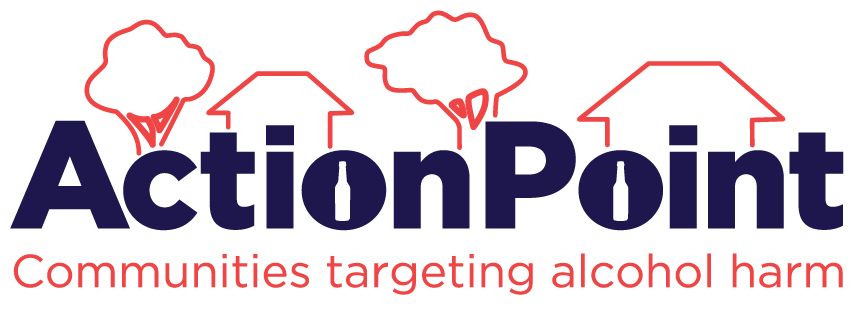Evidence-based information and action tool
 For all the up-to-date information on alcohol harm to Māori, please visit our action tool ActionPoint.
For all the up-to-date information on alcohol harm to Māori, please visit our action tool ActionPoint.
There are a number of factors which give rise to groups in society experiencing more alcohol-related harm than others. Inequities in harm can be driven by our age, where we live and the number of alcohol outlets close to our homes, the socio-economic circumstances we live in, our exposure to racial discrimination and structural barriers that limit our opportunities, as well as our alcohol consumption patterns.
Māori suffer disproportionately from alcohol-related harm.
Inequities in harm ARE NOT about biology – they reflect structural and institutional discrimination, differences in access to key conditions that affect opportunities in life (adequate income, housing, employment) and the environments we live in (more alcohol outlets in low income neighbourhoods)
Pre-European Māori were one of the few known societies not to have manufactured or used psychoactive substances. Many Māori petitioned Parliament for the total prohibition of alcohol. Click here for more information: Māori & Alcohol: A History
In te reo Māori, waipiro (alcohol) means stinking water.
- The alcohol environment
The high level of alcohol-related harm that Māori experience is simply unjust, and is related to living in communities saturated with liquor outlets. Outlets face stiff competition so will often lower their prices and stay open for longer. This increased availability of cheap alcohol plays a major role in Māori suffering more alcohol-related harm.
Young Māori (and Pacific peoples) men aged 15-24 years suffer more harm from living in areas with high numbers of liquor outlets compared to European men living in communities with the same number of liquor outlets.
- Racial discrimination
New Zealand Secondary school students who report experiencing ethnic discrimination are almost twice as likely to report binge drinking as those who do not.
- Deprivation
In 2015/16, adults living in the most deprived areas were 1.4 times more likely (25% vs. 19%) to be hazardous drinkers than those living in the least deprived areas. Higher proportions of Māori live in areas with high deprivation.
In New Zealand, young adolescent females (<16 years) living in low SES neighbourhoods are increasing the quantities of alcohol they consume over time. They are now drinking more in an occasion than males of the same age. Female brains are more seriously impacted by alcohol use.
Harms from alcohol are also more prevalent among drinkers in drinkers living in the most deprived areas.
- Alcohol use and disorders
Since 2011, hazardous drinking among New Zealanders has been increasing every year. Māori women, in particular, have increased their hazardous drinking considerably (from 21% in 2011/12 to 29% in 2015/2016). This compares a prevalence of 12% among European/other women in 2015/2016. This has important implications for reducing the consumption of alcohol during pregnancy.
In 2015/2016, Māori adults were 1.5 more likely to be hazardous drinkers than non-Māori. Over one-third (37%) of Maori men were classified as hazardous drinkers compared to 29% of Pacific men and 29% of European men.
Māori are approximately twice as likely as non-Māori to have alcohol use disorders even after taking into account age, sex, education and income.
- Alcohol harm
Māori men have a death rate from alcohol which is more than twice that of non-Māori.
Māori are more likely to be apprehended by police for an offence that involves alcohol.
Māori are more likely to experience harmful effects on areas such as financial position, work, study or employment, injuries and legal problems as a result of their drinking compared with other New Zealanders.
Māori women suffer more adverse effects as a result of other people’s drinking than any other sub-group by ethnicity and gender.
There are strong links between reducing the availability of alcohol and reducing suicides. New Zealand has the highest rate of suicide in the developed world and again, inequalities are present between Māori and non-Māori. Increases in alcohol taxes have been shown to reduce young male suicides.
The more alcohol-related harms a New Zealand Secondary school student experiences the less likely they are to finish high school.
We must take serious action to reduce these inequities. Currently, a Treaty of Waitangi claim has been lodged to the Tribunal regarding the harms from waipiro (alcohol) to Māori.
Documents:
2024: Tikanga Māori and alcohol licensing proceedings. Prepared for the Health Promotion Directorate of Health New Zealand /Te Whatu Ora and the Ministry of Justice by Kristen Maynard
2013: Women and Alcohol in Aotearoa/New Zealand Te waipiro me ngā wāhine i Aotearoa Jenny Rankine with Amanda Gregory, Anna Tonks and Te Pora Thompson-Evans
2003: Te Iwi Maori me te Inu Waipiro: He Tuhituhinga Hitori He Tuhituhinga Hitori - Maori & Alcohol: A History. By Marten Hutt Published by the Health Services Research Centre
Fact Sheets:
2009: Fact Sheet: Alcohol Harm in New Zealand
Submissions:
2019: Submission to the Māori Affairs Select Committee on the Inquiry into health inequities for Māori
2012: Submission - Inquiry into the determinants of wellbeing for Maori Children
Presentations:
2012: Harm to Harmony Symposium Presentation: Te kohingo ō te hauora wahine Māori